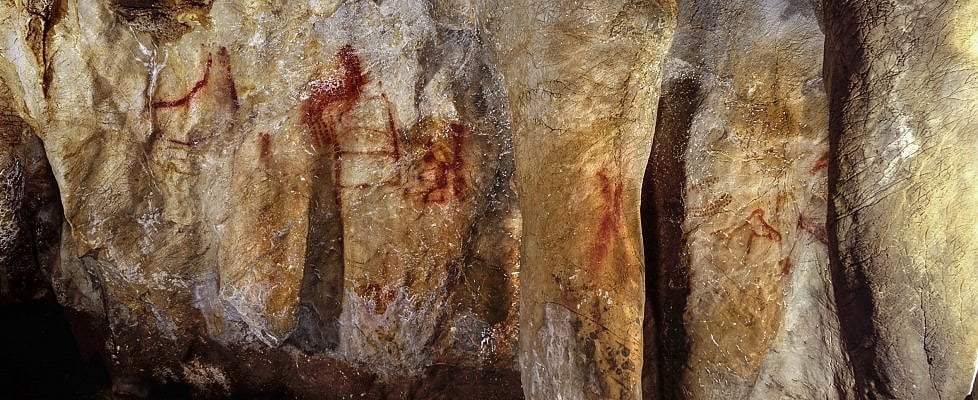The oldest known cave paintings have been discovered in some caves in Spain, dating back 65,000 years and therefore the work of Neanderthals, who would thus become the first “artists” in history, 20,000 years before the appearance in Europe ofHomo sapiens, who until now had been considered the first in history to have expressed themselves creatively. These are some red marks representing human figures, animals and objects. The discovery, made by a team of British, German, and Spanish researchers from different universities and research institutes, is featured in the issue of Science published yesterday, Friday, Feb. 23, 2018. To obtain the dating of the paintings, the researchers used the uranium-thorium method, which makes it possible to date materials up to five hundred thousand years ago: by measuring the proportion of uranium isotopes to thorium isotopes that have accumulated in calcite over the millennia, it is possible to arrive at a very good level of approximation. And the dating is made possible because the paintings were covered with calcite encrustations, which accumulated on them as they were made. This is a revolutionary discovery because it challenges our knowledge of the history of human evolution and shows that Neanderthals were much smarter than we think.
Already some scientists had speculated that Neanderthals were capable of creating works such as those found, but evidence was lacking: the recent discoveries have therefore closed this knowledge gap and would seem to confirm the hypotheses. The paintings were found at three different sites: at La Pasiega, near Bilbao (dated to 64,800 years ago: the markings depict a ladder and some animals), at Ardales, near Málaga (65,500 years ago: the figure of a human hand was found), and at Maltravieso near the Portuguese border (66,700 years ago: some stalactites and stalagmites painted red were found here). In addition, some shells painted red and pierced (probably to make jewelry) have also been found in the cave of Aviones, near Cartagena: in this case it would be work dating as far back as 115,000 years ago, 20,000 years before the first jewelry made by homo sapiens in Africa.
We still have no idea what these paintings mean, said one of the researchers, Dirk Hoffmann of the Max Planck Institute. What is certain is that these paintings represent evidence that Neanderthals had cognitive abilities not so far from those of modern humans: our consideration of this species, whose intelligence has never enjoyed great fortune in the collective imagination, will therefore have to be re-evaluated. For João Zilhão, another of the researchers involved in the study, the new findings close the debate once and for all: Neanderthals would not have been less intelligent thanhomo sapiens and would simply have been a different species of human being, which would later become extinct. However, other scientists have said that it is still necessary to be cautious with such claims. Indeed, the presence of skeptics must be recorded: among them, Adam Brumm of Griffith University in Brisbane, who told the Guardian that it is possible that Neanderthals were capable of making artwork, but that the discovery that took place in Spain cannot prove this with certainty, because the researchers may have performed uranium-thorium dating on fragments of calcite that did not cover the paintings, but were simply part of the support. Many, however, welcomed the discovery published in Science.
Pictured are the paintings discovered at La Pasiega. Ph. Credit P. Saura / Max Planck Institute for evolutionary anthropology
 |
| Oldest known cave paintings discovered, Neanderthals were the first artists |
Warning: the translation into English of the original Italian article was created using automatic tools. We undertake to review all articles, but we do not guarantee the total absence of inaccuracies in the translation due to the program. You can find the original by clicking on the ITA button. If you find any mistake,please contact us.